
Jealie is a staff writer and expert on real estate education, lead generation, marketing, and investing. She has always seen writing as an opportunity to apply her knowledge and express her ideas. Over the years and through her internship at a real estate developer in the Philippines, Camella, she developed and discovered essential skills for producing high-quality online content. See full bio
Reviewed by Table of ContentsOne skill that sets top buyer agents apart is quickly converting warm leads into loyal clients. But how do they do this? A buyer presentation! A strategic buyer presentation is crucial as it helps build a lasting professional relationship. It must include a summary of the buyer’s needs, market overview, property selections, and next steps. In this article, I’ll cover the purpose of a buyer presentation and provide a step-by-step guide to creating one. I’ll also offer buyer presentation template examples and key tips for successful presentations.

You’ll need to seal the deal with that prospect once you’ve generated a buyer lead through your real estate prospecting efforts. A buyer presentation is a short, semiformal presentation that lays out the professional relationship between buyer’s agents and leads. It is typically given after the initial conversations with potential buyers. It’s a way to showcase your expertise and marketing strategies, convey clear and realistic expectations, explain the homebuying process, and ask questions.
In a real estate buyer presentation, it’s essential to include information that thoroughly showcases your expertise and the available property listings. Some key elements to include are as follows:
Crafting an effective buyer presentation involves specific steps. These include researching your audience, tailoring your approach, and following up appropriately. Below is an overview of the essential steps for creating a buyer presentation that grabs attention and delivers results.
Interactive templates fully immerse your clients in the experience during a real estate buyer presentation. These templates enhance the visual appeal of your presentations and make them more engaging and memorable for your clients. Use a template that allows your buyers to explore stunning property photos, view 3D floor plans, and take a virtual neighborhood tour. These features transform the presentation into an exciting journey rather than a static display.
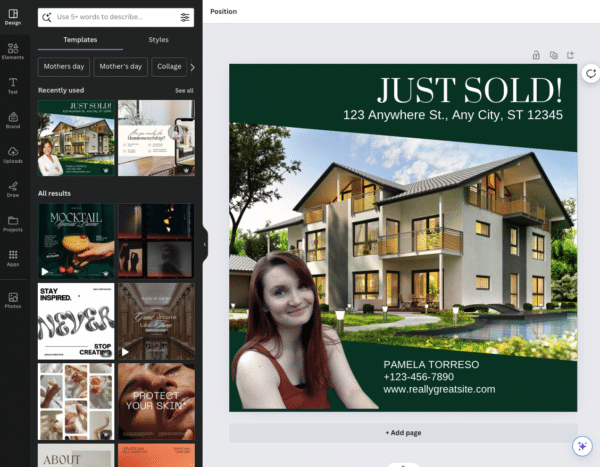
Canva is a popular, easy-to-use, and versatile graphic design tool. It is the preferred design tool for real estate agents who need to quickly create professional marketing materials. Canva offers templates, editing tools, and sharing options for custom property flyers and branded social media posts.
To understand the buyer’s needs and wants, you must learn about their life and what they like. Instead of asking about basic things like where they want to live and how much money they have, ask them questions via an online form about their current living situation, reasons for moving, previous experiences with buying a home, and what they’re looking for in an agent.
Then, when you meet them, give them a map and ask them to show you where they want to live and where they don’t want to live. They can also write the most important things they want in a home and the things they don’t want. This method personalizes the discussion, making potential buyers active participants in the search process.
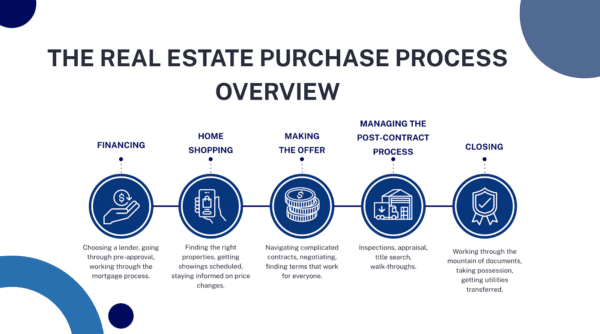
It is essential to guide homebuyers through the intricate homebuying process clearly and concisely. By doing so, you will minimize their anxiety and establish trust.
Here are important steps on the homebuying process timeline:
To help buyers make smart decisions, provide comprehensive market information, including home price trends, property variety in different neighborhoods, average time on the market, and insight into negotiation and purchasing under current market conditions. Ensure you have all the information you need to feel confident about your investment in this market.
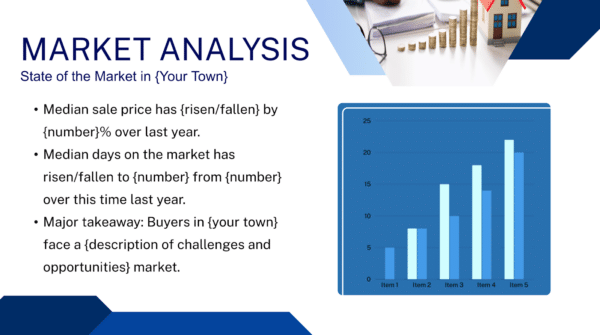
Here is an example script of what you would say to a buyer during the presentation:
“Based on the market analysis, we can see that the average selling price for similar properties in this area has [increased or decreased] by [percentage] over the past year. This indicates a [strong or low] demand for homes in this neighborhood and suggests that now may be a [good or bad] time to make a purchase. Additionally, the [high or low] inventory of similar homes means there is [less or more] competition for buyers, which could work in your favor. Overall, the market analysis indicates [favorable or unfavorable] conditions for purchasing a home in this area.”
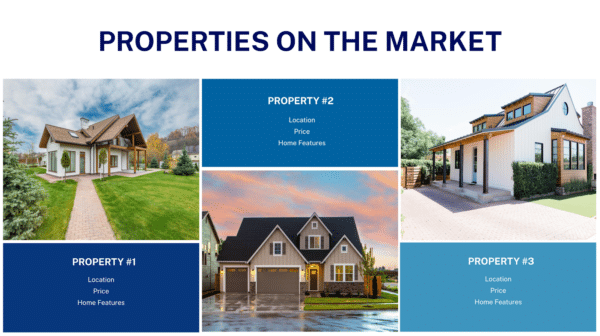
It’s essential to do more than recite the home features when presenting properties. Instead, bring each home to life by creating stories that link the property to the buyer’s lifestyle. To make it engaging and visually appealing, use the following:
Remember to provide transparent information about the financial aspects of buying a property. This includes explaining the down payments, closing costs, and ongoing expenses like property taxes, insurance, and maintenance. Remember that you are not a mortgage professional, so generalize financing and provide contact information for mortgage professionals.
As you wrap up your presentation, touch on the buyer’s representation agreement. In real estate, things can be full of surprises, and without this agreement, there’s a chance of investing a lot of time in clients only to see them switch to another agent at the eleventh hour. It’s crucial to showcase a sample agreement and guide them through key sections, like exclusive representation, your role as their agent, and how you will receive compensation.
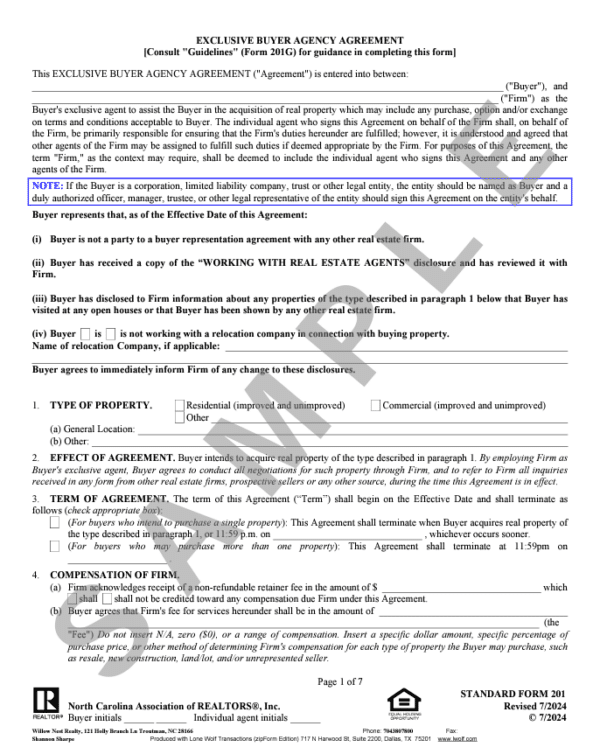
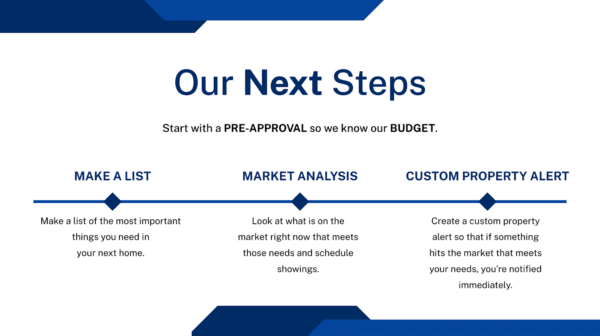
It’s important to end your real estate buyers presentation by clearly outlining the next steps. Instead of just saying “thank you,” let them know what to expect next. This could include setting up property tours or diving into offer strategies. Provide a clear timeline to maintain momentum. Answer any questions and demonstrate that you are prepared to assist them throughout their homebuying journey. This approach keeps things organized and shows your dedication to helping them find the perfect place.
Now that you know how to create a buyer presentation and have a template ready to go, let’s review the tips for delivering your presentation in a way that builds a foundation for a solid buyer-agent relationship.
Delivering a top-notch, successful buyer’s presentation takes confidence (and a little thoughtfulness), but if you do it well, you can convert those warm buyer leads in as little as 15 minutes. Do you have any real estate buyer presentation templates, buyer presentation scripts, or advice for new agents giving their first buyer presentations? Or maybe a story about a buyer presentation that went sideways? Let us know in the comment section.